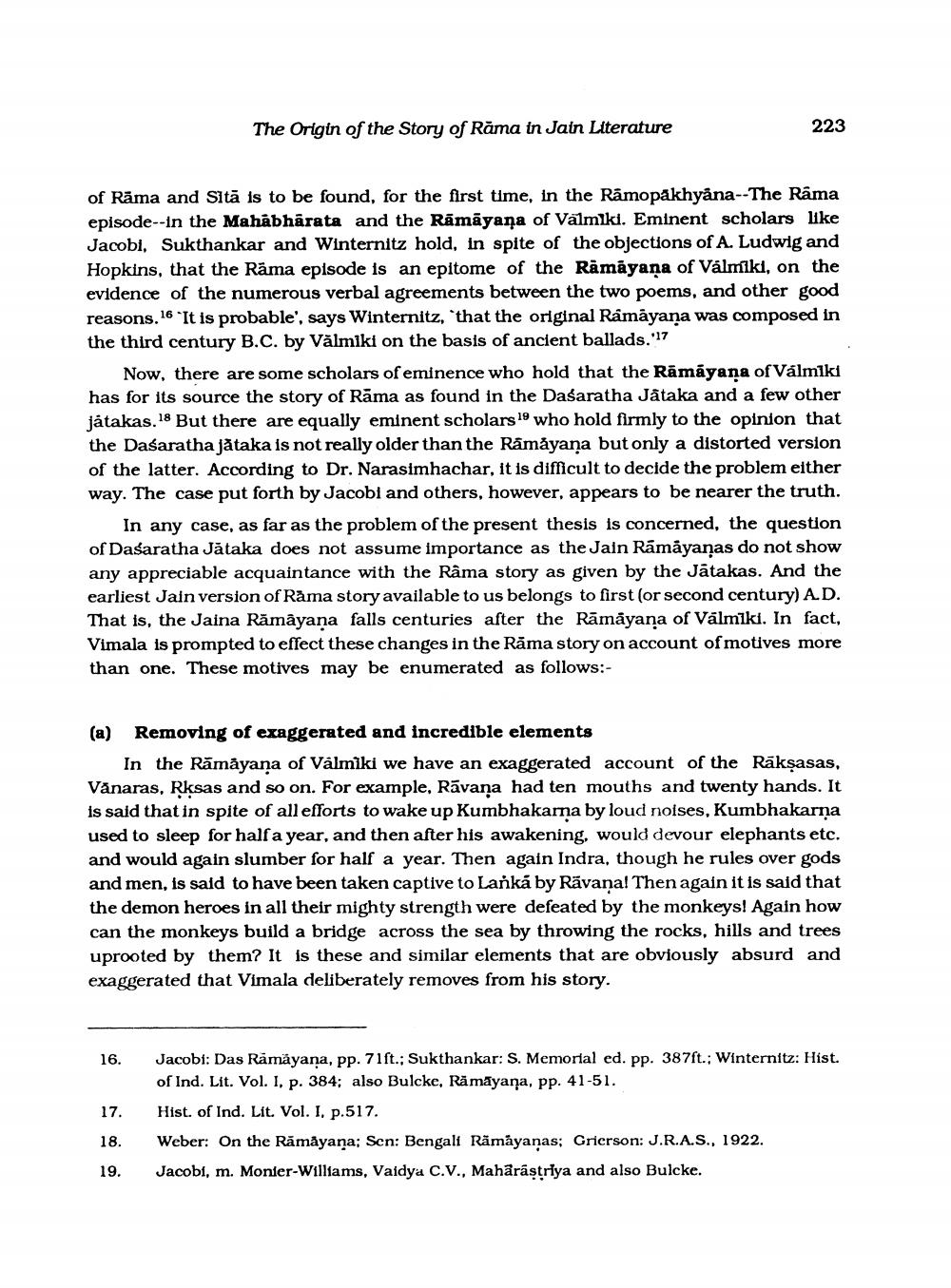________________
The Origin of the Story of Rāma in Jain Literature
223
of Rāma and Sitz is to be found, for the first time, in the Ramopakhyana--The Rama episode--in the Mahabharata and the Rāmāyana of Valmiki. Eminent scholars like Jacobi, Sukthankar and Winternitz hold, in spite of the objections of A. Ludwig and Hopkins, that the Rama episode is an epitome of the Rāmāyana of Valmiki, on the evidence of the numerous verbal agreements between the two poems, and other good reasons. 16 "It is probable', says Winternitz, that the original Ramayana was composed in the third century B.C. by Valmiki on the basis of ancient ballads."7
Now, there are some scholars of eminence who hold that the Rāmāyana of Valmiki has for its source the story of Rāma as found in the Dasaratha Jätaka and a few other játakas.18 But there are equally eminent scholars 19 who hold firmly to the opinion that the Dasaratha jataka is not really older than the Ramayana but only a distorted version of the latter. According to Dr. Narasimhachar, it is difficult to decide the problem either way. The case put forth by Jacobi and others, however, appears to be nearer the truth.
In any case, as far as the problem of the present thesis is concerned, the question of Dasaratha Jātaka does not assume importance as the Jain Rāmāyaṇas do not show any appreciable acquaintance with the Rama story as given by the Jatakas. And the earliest Jain version of Rama story available to us belongs to first (or second century) A.D. That is, the Jaina Rāmāyana falls centuries after the Rāmāyana of Vālmīki. In fact, Vimala is prompted to effect these changes in the Rāma story on account of motives more than one. These motives may be enumerated as follows:
(a) Removing of exaggerated and incredible elements
In the Rāmāyana of Valmiki we have an exaggerated account of the Rākşasas, Vanaras, Rksas and so on. For example, Rāvana had ten mouths and twenty hands. It is said that in spite of all efforts to wake up Kumbhakarna by loud noises, Kumbhakarna used to sleep for half a year, and then after his awakening, would devour elephants etc. and would again slumber for half a year. Then again Indra, though he rules over gods and men, is said to have been taken captive to Lanká by Rāvana! Then again it is said that the demon heroes in all their mighty strength were defeated by the monkeys! Again how can the monkeys build a bridge across the sea by throwing the rocks, hills and trees uprooted by them? It is these and similar elements that are obviously absurd and exaggerated that Vimala deliberately removes from his story.
Jacobi: Das Ramayana, pp. 71st.: Sukthankar: S. Memorial ed. pp. 387ft.; Winternitz: Hist. of Ind. Lit. Vol. I. p. 384; also Bulcke, Rāmāyana, pp. 41-51. Hist. of Ind. Lit. Vol. I. p.517. Weber: On the Rāmāyaṇa; Sen: Bengali Ramayanas: Grierson: J.R.A.S., 1922. Jacobi, m. Monier-Williams, Vaidya C.V., Maharastriya and also Bulcke.




